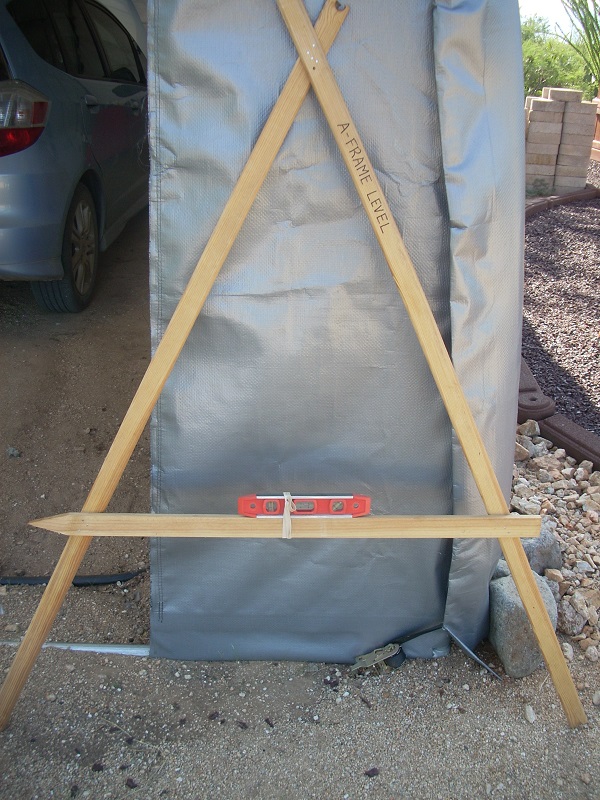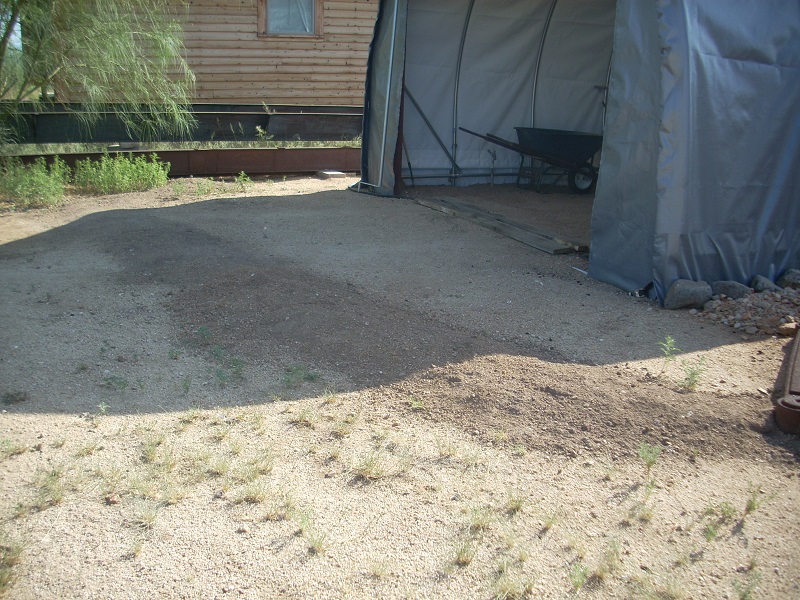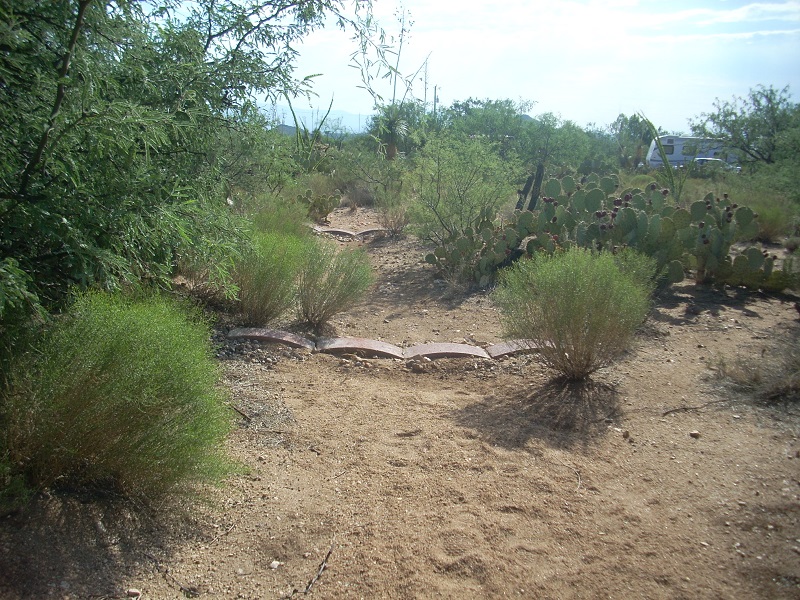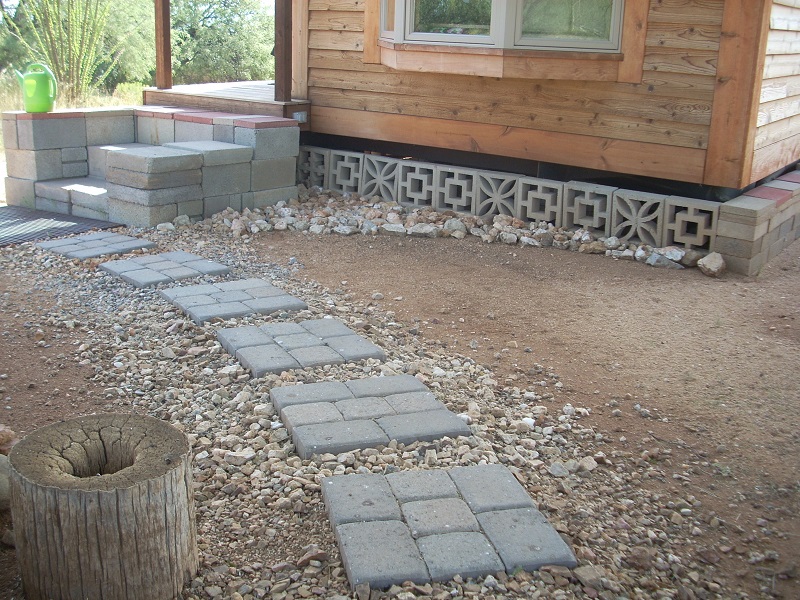Watch Brad Lancaster's TedxTucson Talk.
My list:
- Do any already-established trees/plants seem stressed? Improve their water collection ability.
- Get more shade (always desirable in the Arizona desert)!
- Plant trees to hide undesirable elements (our water tank, overflow trailer, hauling trailer).
- Plant some fruit trees; grow vegetables.
- Possibly plant rings of vegetation around nearby cacti to help protect people from dangerous Arizona vegetation.
- Establish more vegetation/flowers/groundcover (create mini-infiltration-basin ‘pockets’).
- Possibly create an automatic watering device for birds/critters.
Read Brad Lancaster's book: Rainwater Harvesting for Drylands and Beyond, Volume 1. I bought this early on, to guide my project.
I also got Volume II, which gives details on constructing water-harvesting earthworks.
Here is Brad Lancaster's website.
-
This free Contour Map Creator helps to understand the topography of your property.
There's also a free Land Area Calculator (type in an address, select desired region).
WolframAlpha is a fantastic resource for math calculations (and more). -
I used SketchUp (3D, free version) to create a site plan, showing the major structures on
our property.
(You can import a snapshot of your property from the Contour Map Creator, and use it for proper house placement, etc.)
There are great SketchUp tutorial videos here.
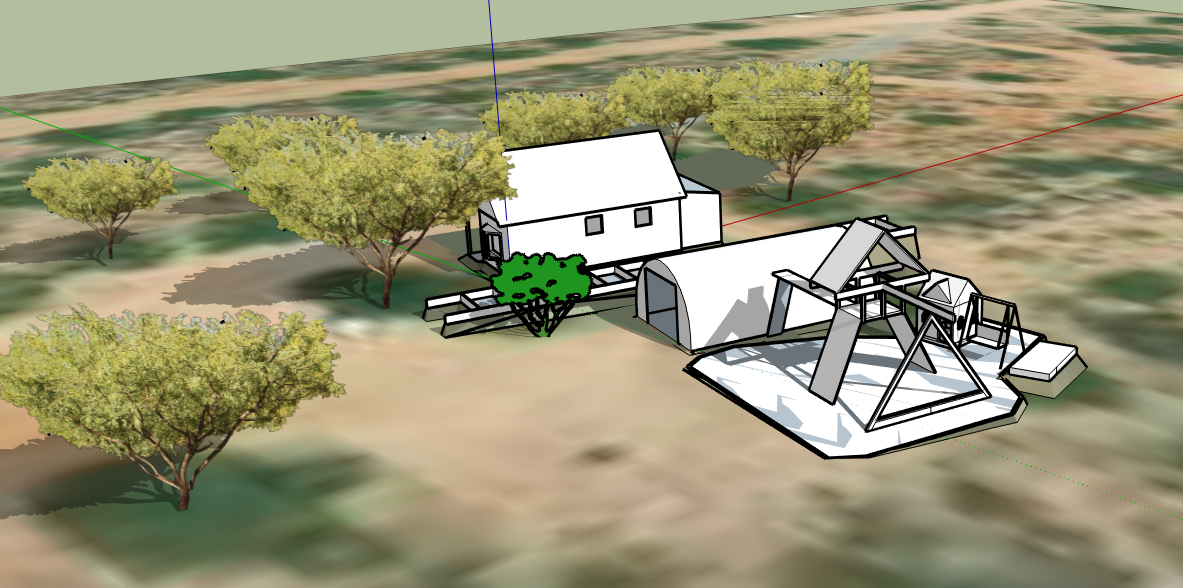
My Site Plan
A big benefit of creating your site plan with SketchUp:
you can see shadows cast by your structures (and trial tree placements)
throughout the day/year.
-
COMPOSTER:
Compost improves any planting you do.
Now I don't waste kitchen scraps, and I have a great use for my Amazon boxes.
I had tried an open compost pile, but our desert critters eat everything, leaving nothing to compost.
ComposterHere's what I use: - COMPOSTER: I've been happy with this 37 gallon Outdoor Tumbling Composter. My method (and our hot temperatures) produce a batch about every two months. I have to water the mixture (note the watering can) every 2–3 days.
- PAPER SHREDDER (for BROWNS): I searched extensively for an inexpensive paper shredder that says it can handle cardboard—no luck. However, this micro-cut shredder works great. I don't shred thick cardboard (try a small piece first to see how it does), and I oil it every time I empty the basket. I also shred all our junk mail and cardboard/paper food packaging (like cereal boxes)—just avoid anything too shiny/glossy, since it doesn't decompose as quickly.
- TRASH CANS: These hold my shredded paper/cardboard and tiny twigs (for aeration).
- MAGIC BULLET (to process GREENS): I use pureed kitchen scraps for the green. I save all scraps (including used tea bags) in a tupperware in the refrigerator. When full, I puree in the Magic Bullet (one-third filled with water), and then go out and dump it into the composter. For every container of green, I put in three equal-sized containers of browns, and then rotate the composter several times. I add small twigs as needed for aeration, otherwise the pureed scraps and tiny paper pieces can make the mixture too dense.
-
TILLER:
Our ground is really hard (and I'm not-so-young), so I need help digging.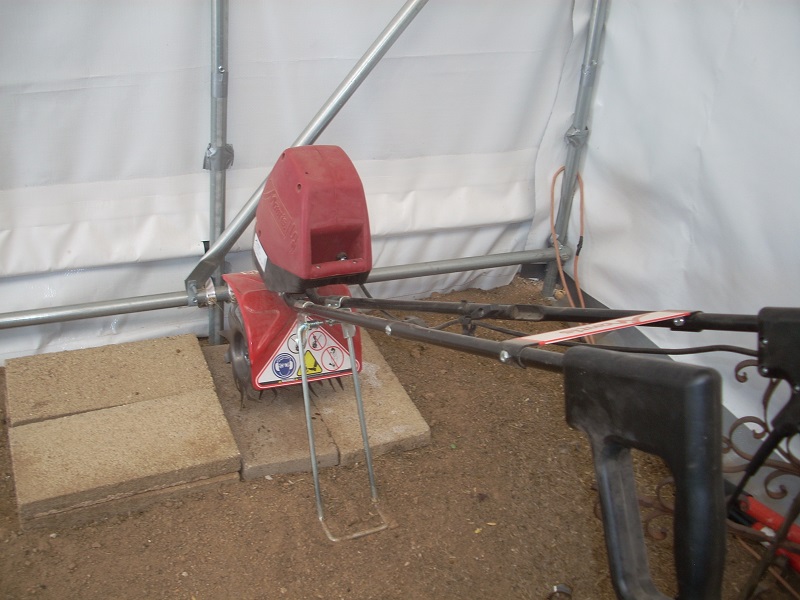
Mantis Electric Tiller
Our desert earth is hard and rocky,
and this helps tremendously.
The rocks get churned up,
and I periodically stop and remove them.Growing up, my Mom loved her Mantis. So, I went with this Mantis Electric Tiller (together with the kickstand). I also got heavy-duty extension cords, protective eye wear, and disposable face masks (since it's really dusty with dry desert earth). This works best if you don't push it forward, but instead pull it back (towards you).
At right is my super-simple small-tool-storage solution in our pole-frame garage. After researching many potential (expensive) solutions, I came up with an almost-free rubber band system. Two rubber bands are used to hang each item: #1 goes around the pole; #2 goes thru both ends of #1, and then through itself to ‘lock’. In our intense 100 degree plus Arizona summers, some of the rubber bands have failed after several weeks—the pipes get hot!! When it was cooler, they lasted much longer. In any event, don't hang anything that can't withstand a short fall to the earthen floor when the rubber bands do eventually fail. It's super easy to get stuff, re-attach, and re-locate if you decide to move things around. I'll probably keep searching for a more permanent pole-attaching-tool-hanging solution, but for now this is working great for me.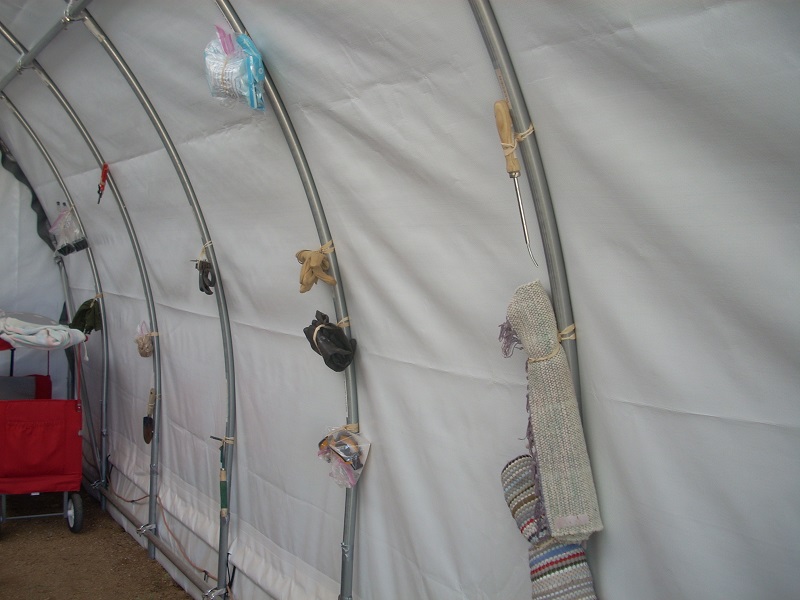
Rubber-band small-tool storage solution
Lots of mulch is desirable for retaining moisture.
-
Wood Chip Mulch:
I found this video useful: Worst and Best Wood Chip Mulch for Your Vegetable Garden -
Sheet Mulching:
I was intrigued by this sheet mulching. Playing with this idea, my daughter laid out cardboard sheets beneath a couple inches of rubber mulch in a play area, where the weeds had been very troublesome. It solved the weed problem completely, but it does ‘crunch’ when you walk on it. As it decomposes, I suspect the crunching will subside. No cost (if you use Amazon boxes), super-easy, chemical-free weed control—and it enriches the soil as it decomposes. -
Mulch To Buy:
You can buy in bulk (truckloads): Tucson mulch, compost, rock, more
If you live in Tucson, Arizona (or close by), then check out the trees sold through Tucson Clean & Beautiful .
-
They sell a wide variety of trees appropriate for our area.
(Not all trees can handle desert climates!) -
They're much less expensive than similar-size trees purchased from a nursery.
As of August 2020, most are $25 for a #5 size tree. - They deliver to your door!
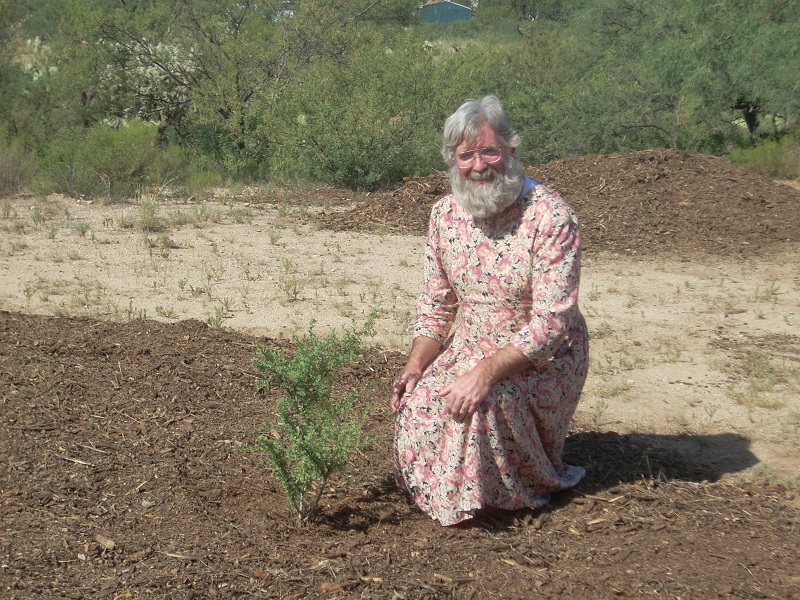 Desert Ironwood Planted August 19, 2020 Can live for almost 800 years! (native, evergreen, slow growth, low water, mature height 15–30 ft, mature width 15–20 ft, very sharp thorns, lavender flower in late spring) |
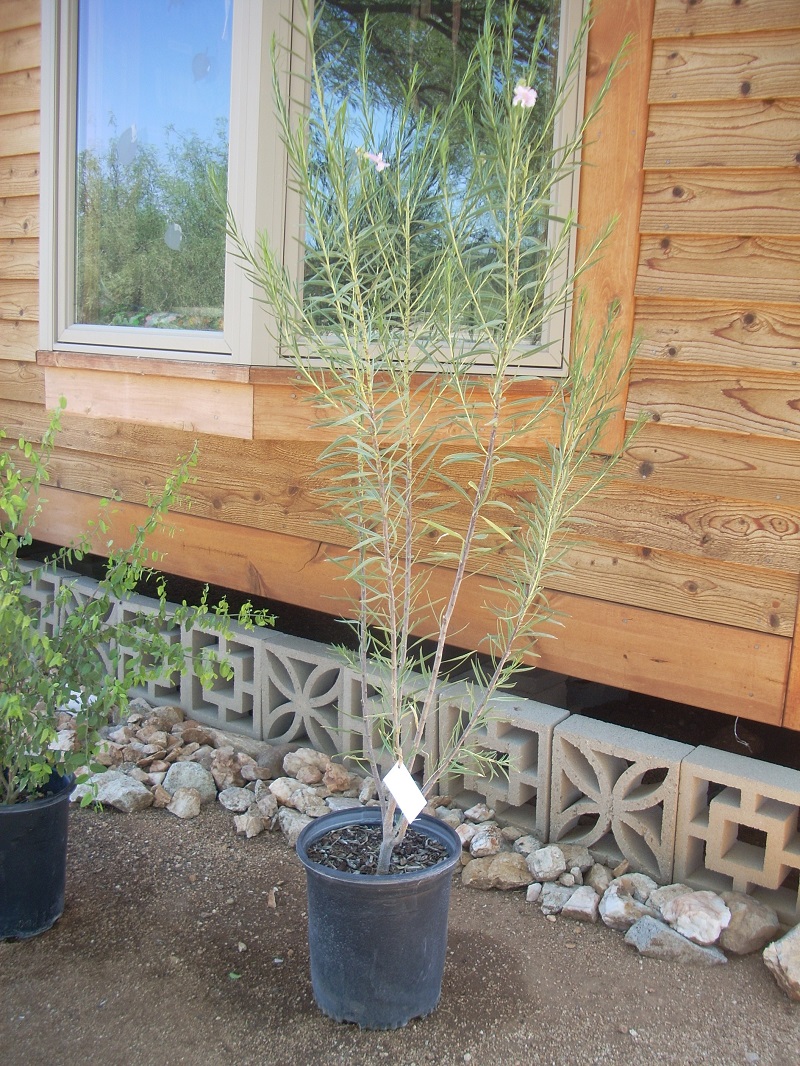 Desert Willow (native, deciduous, moderate growth, low water, mature height 15–30 ft, mature width 10–20 ft, no thorns, pink flower spring to fall, attracts hummingbirds) |
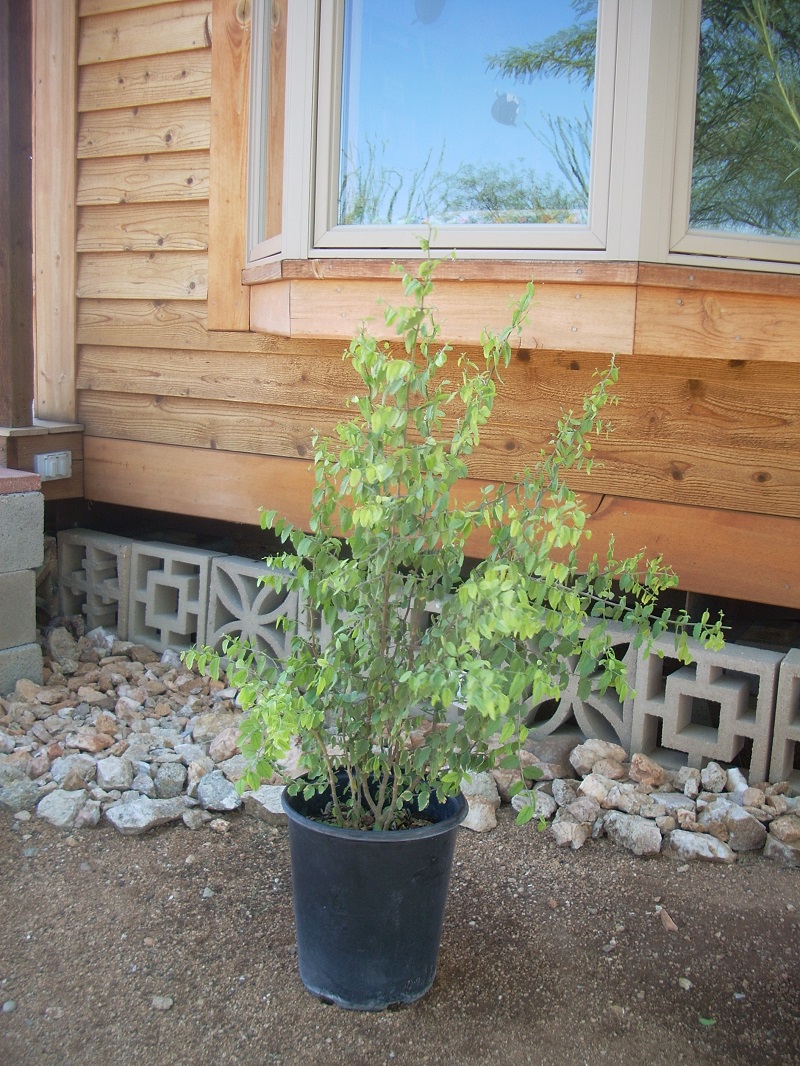 Desert Hackberry (native, semi-evergreen, slow growth, low water, mature height 10–16 ft, mature width 8–10 ft, very sharp thorns, small orange edible fruit in fall, highly desirable bird habitat) |
When I remove dead branches from our local mesquite trees, I break them into small pieces and leave them beneath the tree to decompose and enrich the soil. Before getting these kevlar sleeves, I would always get scratches and hard-to-remove thorns from our dangerous Arizona vegetation. These sleeves do a great job of protecting my arms.

